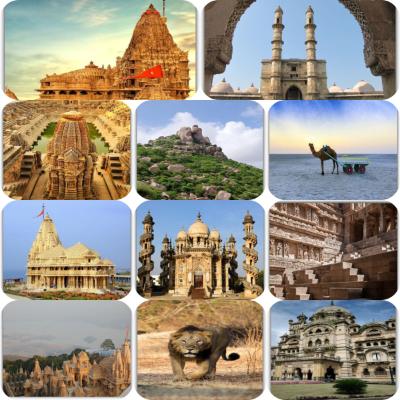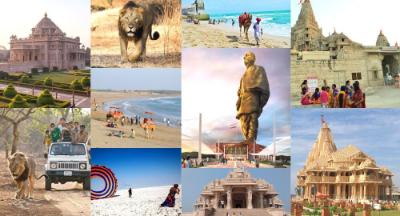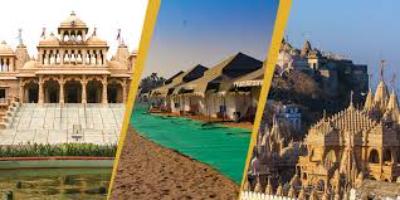The Enigma of Gujarat’s Ancient Ruins: A Historian's Itinerary
The Enigma of Gujarat’s Ancient Ruins: A Historian's Itinerary
As a history enthusiast and travel blogger, there's nothing that excites me more than exploring ancient ruins and unraveling the mysteries of the past. Gujarat, a state in western India, has a rich historical and cultural heritage that beckons historians and explorers alike. From majestic temples to ancient cities and forgotten civilizations, this region is a treasure trove of history. Join me on a fascinating journey through Gujarat's ancient ruins and discover the enigma that lies within.
Ahmedabad: Gateway to Gujarat's Glorious Past
Our journey begins in Ahmedabad, the largest city in Gujarat and the gateway to its glorious past. The city itself is steeped in history, with its intricate old quarter and magnificent landmarks. But our focus lies on the ancient ruins scattered around Ahmedabad, which give us a glimpse into the region's past.
One of the must-visit sites is the intricate stepwell of Adalaj. Built in the 15th century, this architectural marvel served as a water reservoir and sanctuary for weary travelers. The detailed carvings and the cool ambiance of the stepwell make it a perfect spot to learn about the ancient water management systems of the region.
A short drive from Ahmedabad takes us to the historical town of Patan. It was once the capital of Gujarat and is known for its exquisite stepwells and the Rani ki Vav, a UNESCO World Heritage Site. This ancient stepwell, built in the 11th century, features more than 800 intricately carved sculptures depicting ancient mythology and daily life. It's a photographer's paradise and a testament to the ingenuity of the ancient craftsmen.
Champaner-Pavagadh Archaeological Park: Lost in Time
A few hours' drive from Ahmedabad lies the UNESCO World Heritage Site of Champaner-Pavagadh Archaeological Park. Nestled at the foot of the Pavagadh hill, this park is a treasure trove of Islamic and Hindu architecture, spanning over 1,000 years of history.
The highlight of the park is the Champaner Fort, a magnificent structure that dates back to the 16th century. The fort is a perfect blend of Hindu and Islamic architectural styles and offers breathtaking views of the surrounding landscape. Exploring the fort's ruins and imagining life during that era is an experience that transports you back in time.
While in the park, don't miss the Jami Masjid, one of the finest examples of Indo-Saracenic architecture. This grand mosque, with its domes, minarets, and intricately carved pillars, is a testament to the diversity and artistic prowess of the region.
Dholavira: The Lost Harappan City
Our next stop takes us even further back in time to the ancient Harappan civilization. Dholavira, located in the Rann of Kutch, was once a thriving city during the Indus Valley Civilization, around 4,000 years ago. Today, it stands as a testimony to a civilization lost in time.
Explore the well-preserved ruins of Dholavira and marvel at the intricately planned city layout. The ancient water reservoirs, stepwells, and fortified walls speak volumes about the advanced urban planning and engineering of the Harappan people. Walking through the ruins, you can't help but feel a connection to those who lived here thousands of years ago.
Conclusion
Gujarat's ancient ruins are testament to the rich history and cultural heritage of the region. From the intricately carved stepwells of Adalaj and Patan to the grand fort of Champaner-Pavagadh and the awe-inspiring ruins of Dholavira, each site holds a piece of the enigma that is Gujarat's past.
So, whether you are a history enthusiast, a curious traveler, or simply someone looking to uncover the mysteries of the past, a journey through Gujarat's ancient ruins will leave you in awe. Plan your itinerary, pack your bags, and get ready to embark on a historical adventure like no other!
Remember to share this blog post with your fellow history enthusiasts and travelers, and let them join in on the enigma of Gujarat's ancient ruins!
Disclaimer : The information provided in this blog is for general informational purposes only. While we strive to keep the content accurate and updated, TravelSetu assumes no liability for errors or omissions. If you believe any part of this blog infringes your rights or causes concern, please notify us immediately at info[at]travelsetu[dot]com so that appropriate action can be taken.





